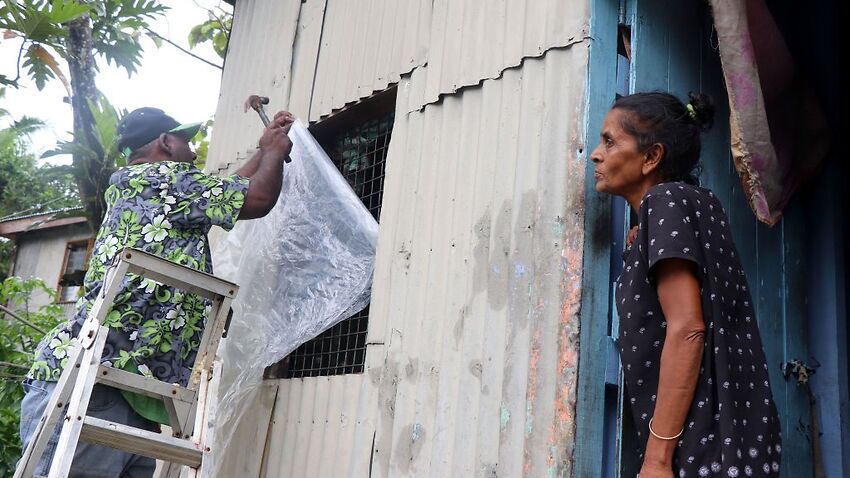Fiji has declared a state of natural disaster, ordering its entire population to take shelter ahead of a nightly curfew as a Category Five tropical cyclone approached the Pacific Island nation.
Cyclone Yasa is expected to bring winds of up to 250 kilometres per hour and torrential rain across the South Pacific archipelago when it makes landfall.
It was on track to hit Fiji late on Thursday and the National Disaster Management Office said around two-thirds of the island nation’s population of 900,000 are in its path.
Still a few hours out from the worst weather, Fiji’s Meteorological Service said storm force winds and heavy rains have been recorded in some parts of the country already.
Fiji’s Prime Minister Frank Bainimarama told the country’s near one million population to find safe shelter ahead of a 14-hour nationwide curfew.
“If you have not done so already, secure your homes, board up the windows, ensure you have emergency kits ready, as well as enough food and water stocked to last several days,” he said in a Facebook post.
“All those in low-lying areas should move to higher ground. And if you feel you are fully prepared, lend help to a neighbour who may not be.”
The prime minister said a curfew would be imposed from 4pm on Thursday until 6am on Friday.
“Unless you are evacuating, that means stay off the roads and stay safely sheltered,” he added.
He said the impact forecast for this latest super storm is “more or less the entire country”.
“Over 850,000 Fijians are in the direct path of the cyclone – more than 95 per cent of our population.”
In the capital Suva on Wednesday, residents tried their best to board-up windows and storefronts, while others lugged bags filled with vital provisions through flooded streets.
National Disaster Management Office director Vasiti Soko urged anyone who doubted their home’s structural integrity to prioritise survival over protecting their property.
“If you need to move to an evacuation centre, we are pleading that you move before it gets dark,” Ms Soko said.
Ms Soko said Cyclone Yasa was likely to have a larger impact than Cyclone Harold in April this year, another Category Five storm that gouged a trail of destruction across the Solomon Islands, Vanuatu, Fiji and Tonga.
“We can see the eye (of Cyclone Yasa) and the area that’s of concern – it’s not just part of Fiji like Harold, it’s the whole of Fiji,” Ms Soko said.
“It’s strong enough to uproot trees. It’s strong enough to uproot buildings that are not well secured. It can also create a lot of flying debris.”
Military on standby
Category Five cyclones were once rare but have become more common in recent years, with Mr Bainimarama among those blaming the trend on climate change.
“My fellow Fijians, as the world is getting warmer, these storms are getting stronger,” he said.
“Every one of us must treat these climate-fuelled catastrophes with deadly seriousness.”
Ms Soko added that authorities were considering a curfew and movement restrictions, with Fiji’s military on standby if needed.
Schools have already been closed so they can be converted to evacuation centres.
Aid agencies such as the Red Cross are gearing up for a major disaster relief effort, with the focus on maintaining basic services and minimising longer-term social impacts.
“Disasters can strike at any time and we know that knowledge and preparation are critical for communities as they prepare,” Fiji Red Cross Director-General Ilisapeci Rokotunidau said.
The most powerful storm to ever hit Fiji was Cyclone Winston in February 2016, which killed 44 people, destroyed tens of thousands of homes and caused an estimated US$1 billion in damage.
The Red Cross said it had re-positioned supplies across the Pacific in anticipation of a busy cyclone season.
In some good news for the region, another tropical cyclone, Zazu, took a sharp turn to the southeast late Tuesday and was no longer threatening the Tongan capital Nuku’alofa.
The two storms are the first to form in the current cyclone season, which runs until May next year.







